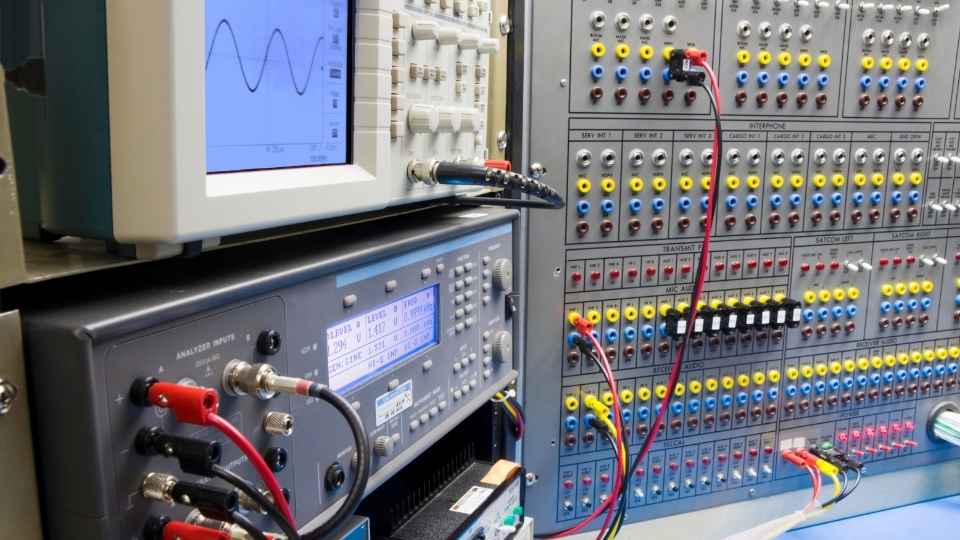
In the vast realm of embedded systems, where technology and innovation converge, lies a world teeming with possibilities.
Like a hidden treasure waiting to be discovered, AVR microcontrollers hold within them the power to unlock new dimensions in electronics.
The Atmega series, a shining gem in this expansive universe, offers unparalleled capabilities and versatility.
This article aims to delve deep into the intricacies of Atmega microcontrollers, unraveling their history, features, and potential applications.
So join us on this enlightening journey as we unveil the true potential that lies within the folds of these mighty microcontrollers.
Key Takeaways
- The Atmega series of microcontrollers has a rich history and has evolved over the years with advancements in technology, offering higher clock speeds, increased memory size, enhanced peripherals, and improved power efficiency.
- Atmega microcontrollers are known for their versatility and ease of use, with options for both low-power and high-performance devices. They also offer a wide range of peripherals such as analog-to-digital converters, timers, and communication interfaces.
- The Atmega series is supported by an open-source ecosystem, with tools like Atmel Studio IDE and the Arduino platform, which encourage collaboration and innovation among developers.
- Atmel, the manufacturer behind the Atmega series, is a prominent player in the embedded systems industry and offers a vast range of peripherals. They also have a strong open-source community support with documentation, tutorials, and libraries, providing flexibility with programming languages like C/C++ and assembly language.
History and Evolution of Atmega Series
The Atmega series of microcontrollers has undergone significant evolution since its inception, with a rich history that traces back to its introduction in the early 2000s. These microcontrollers are part of the AVR family developed by Atmel Corporation and have become popular due to their versatility and ease of use.
The Atmega series has seen several iterations over the years, each introducing new features and improvements. From the initial ATmega103 to the latest ATmega4809, these microcontrollers have evolved to cater to various applications and requirements. With advancements in technology, the Atmega series now offers higher clock speeds, increased memory size, enhanced peripherals, and improved power efficiency.

This evolution has empowered developers with the flexibility needed to design innovative embedded systems for a wide range of industries such as automation, IoT, robotics, and more.
Exploring the Key Features of Atmega Microcontrollers
Exploring the key features of Atmega microcontrollers provides a comprehensive understanding of their capabilities and functionalities. Here are four key features that make Atmega microcontrollers a powerful choice for freedom-seeking individuals:
Versatility: Atmega microcontrollers offer a wide range of options, from low-power devices suitable for battery-powered applications to high-performance devices capable of running complex algorithms.
Abundance of Peripherals: With rich peripheral sets including analog-to-digital converters, timers, communication interfaces, and more, Atmega microcontrollers provide flexibility in designing various applications without external components.
Memory Options: Atmega microcontrollers come with different memory sizes, allowing users to choose the optimal configuration based on their application requirements. This enables efficient utilization of resources while ensuring seamless operation.
Open-Source Ecosystem: The Atmel Studio IDE and Arduino platform provide an open-source environment that fosters collaboration and knowledge sharing among enthusiasts worldwide. This encourages innovation and empowers individuals to explore new possibilities with ease.
Understanding AVR Studio: A Powerful IDE for Atmega Development
Understanding the capabilities and features of AVR Studio is essential for developers seeking a powerful integrated development environment (IDE) for Atmega microcontroller development. AVR Studio, developed by Microchip Technology, provides a comprehensive set of tools that enable efficient coding, debugging, and programming of Atmega microcontrollers. With its user-friendly interface and extensive feature set, AVR Studio empowers developers to unleash the full potential of Atmega microcontrollers.

AVR Studio offers advanced features such as real-time code profiling, which allows developers to analyze their code's performance in real-time. This helps identify bottlenecks and optimize code for improved efficiency. The IDE also supports seamless integration with other Microchip tools like the Atmel-ICE debugger and the Simulator, enabling thorough testing and debugging.
Furthermore, AVR Studio provides access to an extensive library of pre-written code snippets and examples that can be easily incorporated into projects. This saves valuable time during development while ensuring reliable code implementation.
Getting to Know ATMEL: The Manufacturer Behind Atmega Series
ATMEL, a prominent manufacturer in the embedded systems industry, is responsible for developing the highly regarded Atmega microcontroller series. These microcontrollers have become a popular choice among engineers and hobbyists due to their powerful features and versatility.
Here are four reasons why the Atmega series evokes an emotional response in individuals who desire freedom:
Vast range of peripherals: The Atmega microcontrollers offer a wide array of peripherals such as timers, UART, SPI, and I2C interfaces. This allows users to connect various sensors and devices seamlessly.
Open-source community support: The Atmega series has garnered strong community support over the years. This means that users can find extensive documentation, tutorials, and libraries online for quick prototyping and development.
Flexibility with programming languages: The Atmega microcontrollers support multiple programming languages including C/C++ and assembly language. Users have the freedom to choose their preferred programming language based on their expertise or project requirements.

In-circuit programmability: With built-in bootloader functionality, users can conveniently program Atmega microcontrollers directly through USB or other serial communication methods without requiring additional hardware.
The combination of these factors empowers individuals with creative freedom to explore their ideas and develop innovative applications using the Atmega series from ATMEL.
Mastering ISP Programming and Bootloaders for Atmega Microcontrollers
Mastering ISP programming and bootloaders is essential for efficiently programming and updating firmware on Atmega microcontrollers. In the world of embedded systems, firmware updates are crucial to enhance functionality and fix bugs. ISPs (In-System Programmers) facilitate this process by enabling direct communication with the microcontroller's memory, eliminating the need for removing the chip from its circuitry. This allows for easy and convenient programming, making it ideal for production environments.
Bootloaders further simplify the firmware update process by providing a user-friendly interface that enables code upload via various communication protocols such as UART or USB. Bootloaders also enable code storage in non-volatile memory, allowing for automatic program execution upon system startup.
Frequently Asked Questions
What Are Some Alternative Microcontroller Options to Atmega Series?
When considering alternative microcontroller options to the Atmega series, it is important to evaluate factors such as performance, cost, power consumption, and compatibility with existing systems. Several options include PIC, ARM Cortex-M, and STM32 microcontrollers.
How Do Atmega Microcontrollers Compare to Other Microcontrollers in Terms of Power Consumption?
In terms of power consumption, Atmega microcontrollers offer several advantages. They are known for their low power consumption capabilities, making them ideal for battery-powered applications or projects that require efficient energy usage.
Can Atmega Microcontrollers Be Used for Internet of Things (Iot) Applications?
Yes, Atmega microcontrollers can be used for Internet of Things (IoT) applications. With their low power consumption, high performance, and wide range of connectivity options, they are suitable for various IoT projects requiring efficient and reliable operation.

Are There Any Limitations to the Amount of Memory That Atmega Microcontrollers Can Support?
The amount of memory that Atmega microcontrollers can support is limited. While they offer different models with varying memory sizes, it's important to consider the requirements of your application and choose a suitable microcontroller accordingly.
What Are Some Common Troubleshooting Tips for Programming Atmega Microcontrollers Using ISP Programming and Bootloaders?
When troubleshooting programming issues with Atmega microcontrollers using ISP programming and bootloaders, it is important to ensure proper connections, check for correct fuse settings, verify the bootloader code, and use debugging tools for identifying errors.
 Basic Electronics ConceptsEssential ToolsCircuit Design BasicsMicrocontrollersDIY Electronics ProjectsRoboticsPrivacy PolicyTerms And Conditions
Basic Electronics ConceptsEssential ToolsCircuit Design BasicsMicrocontrollersDIY Electronics ProjectsRoboticsPrivacy PolicyTerms And Conditions
